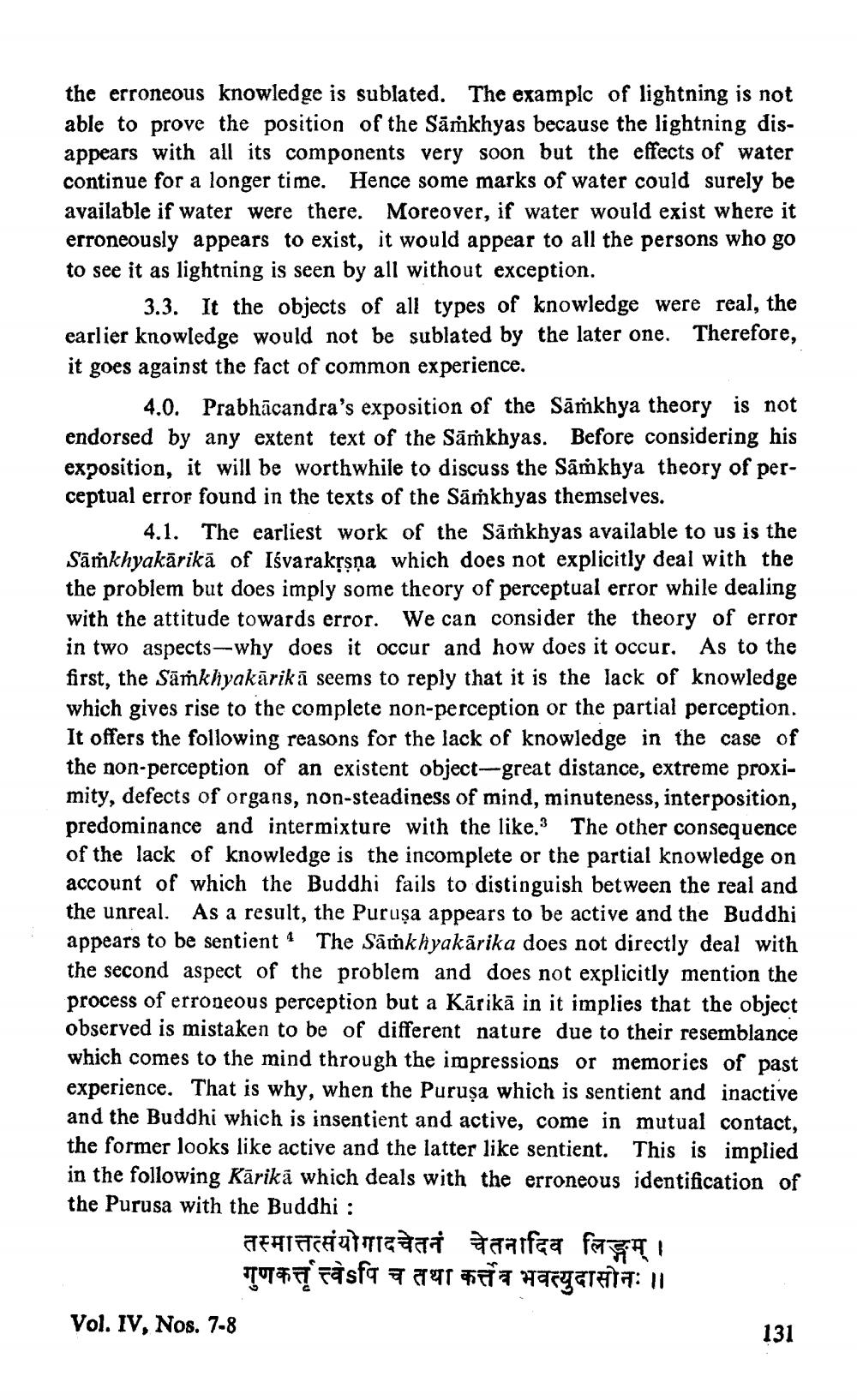________________
the erroneous knowledge is sublated. The example of lightning is not able to prove the position of the Sāṁkhyas because the lightning disappears with all its components very soon but the effects of water continue for a longer time. Hence some marks of water could surely be available if water were there. Moreover, if water would exist where it erroneously appears to exist, it would appear to all the persons who go to see it as lightning is seen by all without exception.
3.3. It the objects of all types of knowledge were real, the earlier knowledge would not be sublated by the later one. Therefore, it goes against the fact of common experience.
4.0. Prabhācandra's exposition of the Sāṁkhya theory is not endorsed by any extent text of the Sāmkhyas. Before considering his exposition, it will be worthwhile to discuss the Samkhya theory of perceptual error found in the texts of the Sāṁkhyas themselves.
4.1. The earliest work of the Samkhyas available to us is the Sāṁkhyakārikā of Isvaraksıņa which does not explicitly deal with the the problem but does imply some theory of perceptual error while dealing with the attitude towards error. We can consider the theory of error in two aspects-why does it occur and how does it occur. As to the first, the Samkhyakārikā seems to reply that it is the lack of knowledge which gives rise to the complete non-perception or the partial perception. It offers the following reasons for the lack of knowledge in the case of the non-perception of an existent object-great distance, extreme proximity, defects of organs, non-steadiness of mind, minuteness, interposition, predominance and intermixture with the like. The other consequence of the lack of knowledge is the incomplete or the partial knowledge on account of which the Buddhi fails to distinguish between the real and the unreal. As a result, the Puruşa appears to be active and the Buddhi appears to be sentient The Sāmkhyakārika does not directly deal with the second aspect of the problem and does not explicitly mention the process of erroneous perception but a Kārikā in it implies that the object observed is mistaken to be of different nature due to their resemblance which comes to the mind through the impressions or memories of past experience. That is why, when the Puruşa which is sentient and inactive and the Buddhi which is insentient and active, come in mutual contact, the former looks like active and the latter like sentient. This is implied in the following Kārikā which deals with the erroneous identification of the Purusa with the Buddhi :
तस्मात्तत्संयोगादचेतनं चेतनादिव लिङ्गम् ।
गुणकर्तृत्त्वेऽपि च तथा कर्त्तव भवत्युदासोनः ॥ Vol. IV, Nos. 7-8
131




